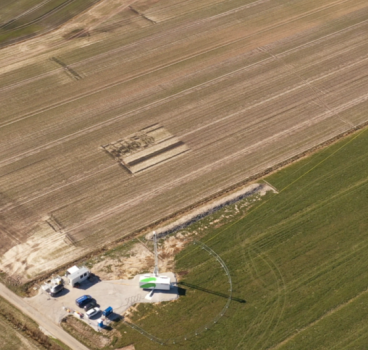Industrial floors – and the move to innovation underfoot
The unassuming industrial floor – a silent workhorse in warehouses, factories, and production facilities – is undergoing a silent revolution. While often overlooked, it plays a critical role in ensuring smooth operations by withstanding the relentless wear and tear of heavy machinery and constant traffic, writes John Ridgeway.
Fortunately, the industrial flooring sector is no longer content with just being durable. Innovation is driving the development of new materials, improved installation techniques and a growing focus on sustainability.
This can be demonstrated by the growing number of manufacturers who are increasingly incorporating recycled content into flooring materials. Crushed glass, reclaimed rubber from used tyres and even industrial byproducts are finding new life as components in durable industrial flooring solutions.
For light-duty industrial settings like warehouses with minimal chemical spills, bio-based materials like cork and linoleum offer sustainable alternatives. Cork, known for its natural resilience and sound absorption properties, is finding applications in light industrial settings. Similarly, traditional linoleum, made from natural materials like linseed oil and cork dust, continues to offer a sustainable and durable option for low-traffic industrial spaces.
Unfortunately, some traditional flooring materials can emit harmful volatile organic compounds (VOCs) that impact indoor air quality, particularly in enclosed industrial environments. Manufacturers are developing new formulations that minimize VOC emissions, contributing to a healthier and safer work environment for employees.
At the risk of stating the obvious, industrial floors also need to be tough. This is why we are seeing new and improved coatings, which are enhancing the performance of industrial floors.
Polyurethane and epoxy-based coatings offer exceptional abrasion resistance, chemical resistance, and even impact resistance, extending the lifespan of the floor and minimising the need for frequent repairs or replacements.
Self-healing concrete, a more futuristic material, incorporates microscopic capsules containing a healing agent. When cracks appear in the concrete, the capsules release the agent, promoting self-repair, helping to minimise maintenance needs. While still in its early stages of development, companies like BASF are actively researching and developing self-healing concrete solutions for industrial applications.
We are also seeing the development of fast curing options. Downtime during installation can be costly for businesses. Rapid-cure concrete and resin flooring solutions allow faster floor installation and quicker return to service for industrial facilities.
This is supported by energy-efficient installation techniques using sustainable practices that extend far beyond conventional materials. Self-levelling concrete and radiant heating systems, for example, are proven to improve energy efficiency during installation and operation of industrial floors.
Technology is also playing its part to ensure that Industrial floors are no longer just passive surfaces. These are paving the way for the concept of "smart floors" integrated with sensor networks and data management systems:
This is helping to create a floor that can "feel" what's happening on its surface. Emerging technologies incorporate sensors directly into industrial flooring. These sensors can monitor various parameters like temperature, moisture levels, and even detect cracks, providing valuable data for facility management.
The data collected by sensor-embedded floors can be integrated with building management systems. This allows for predictive maintenance, where maintenance schedules can be optimised based on real-time data rather than predetermined intervals. This minimises disruptions and saves costs associated with unnecessary maintenance procedures.
These advancements in materials, techniques, and technology foreshadow a future where industrial floors are not just durable but environmentally responsible, high-performing and even intelligent. This in turn will revolutionise industrial spaces, creating a more efficient, sustainable and data-driven foundation for our industrial infrastructure.
But what are the benefits of these next-generation industrial floors? The main one is, of course, the reduced environmental impact. Sustainable materials and practices will minimise the carbon footprint of industrial flooring throughout its lifecycle.
Advanced materials and coatings will also extend the lifespan of floors, reducing maintenance needs and replacement costs. Sensor-embedded floors that can detect potential hazards like cracks or moisture buildup, will also contribute to better health and safety.
Data-driven maintenance will streamline floor management, minimising downtime and associated costs alongside smart floors that can potentially contribute to improved logistics and workflow management within industrial facilities.
So, we can see that the future of industrial floors is brimming with promise. As innovation continues to drive the development of new materials, techniques and technologies, we can expect a future where industrial floors are more than just a passive surface - they will become intelligent partners, playing a crucial role in ensuring a sustainable, efficient, and data-driven industrial environment.
Sources:
- U.S. Green Building Council (USGBC): https://www.usgbc.org/ - USGBC promotes sustainability in construction and offers resources on selecting eco-friendly flooring materials.
- National Floor Covering Association (NFCA): https://www.nfca.org/ - The NFCA represents the flooring industry and provides information on various flooring types, including industrial options.
- American Concrete Institute (ACI): https://www.concrete.org/ - ACI provides resources and information on concrete technology, including advancements in industrial flooring solutions.
- The Construction Specifier: https://www.constructionspecifier.com/ - This publication covers innovations and trends in the construction industry, including advancements in flooring materials.
- National Institute of Standards and Technology (NIST): https://www.nist.gov/ - NIST conducts research on smart building technologies, including sensor integration in construction materials.
- Construction Innovation Hub: https://constructioninnovationhub.org.uk/ - This organization provides information on new technologies in construction, including smart flooring solutions.
Additional Blogs

Wind-power for cranes – a construction game changer?
Wind energy, a clean and renewable resource, is emerging as a game-changer for the construction industry – with innovations that continue to surprise. By harnessing the power of the wind,...
Read moreAre empty desks a construction opportunity?
The COVID-19 pandemic fundamentally altered the way we are employed. With millions transitioning to remote work, office buildings across the Western world stand eerily empty, sparking a critical...
Read more

How new regulations are reshaping the construction industry
The construction industry has long been known for its focus on cost. Traditionally, the lowest bidder has nearly always secured the project, leading to concerns about cutting corners and compromising...
Read more